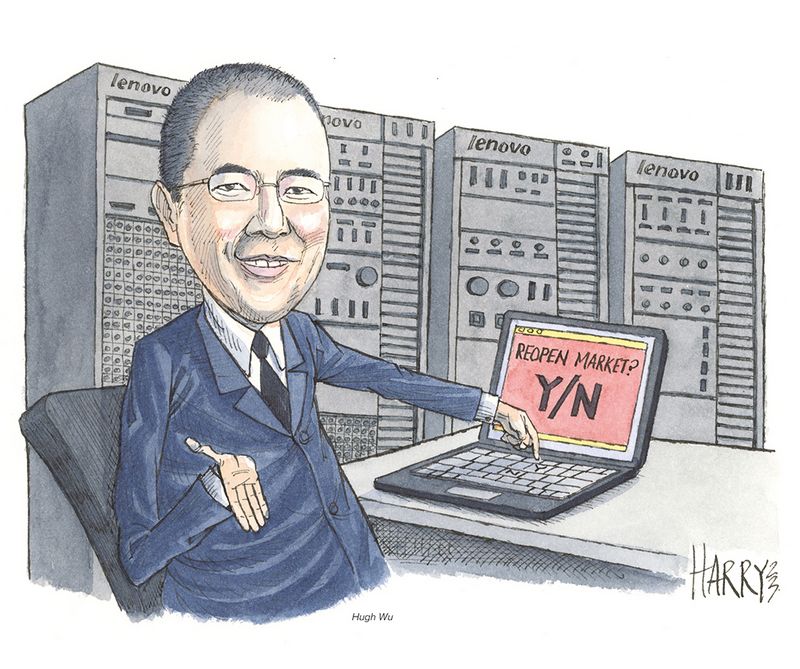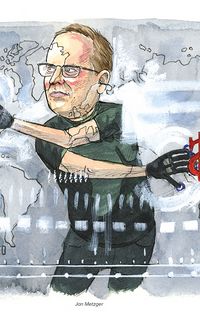Rebooting the market
In a year when many Chinese private sector companies found it hard to raise international funding, Lenovo Group came to market with successful transactions in three different asset classes, making it IFR Asia’s Issuer of the Year.
![]()
The world’s biggest laptop manufacturer, Lenovo Group, raised funds through an offshore syndicated loan, a bond and a convertible bond, and all achieved exceptionally good outcomes for size and pricing despite turbulent market conditions.
Not only that, but it made liability management a key component of its financing strategy in 2022, allowing it to reopen parts of the market and borrow at longer tenors than many other issuers managed.
Emerging markets had a tough time attracting investors in 2022 as US dollar rates soared and Russia’s invasion of Ukraine sent commodity prices rocketing, but Chinese companies also had to contend with the country’s zero-Covid policy and liquidity troubles in the property sector.
In March, China locked down Shenzhen, a key manufacturing hub for electronics, and the site of a factory where Lenovo makes servers for the international market. A month later, there was a two-month lockdown of Shanghai, disrupting Chinese trade further.
Lenovo had started the year with the goal of using its solid investment-grade status to manage its liabilities, rather than seeing an urgent need to raise funds. As a cash-rich company seeing booming demand for its products after much of the world adopted working from home, it was able to wait for the worst of the market volatility to subside.
Components like chipsets, central processing units, storage and memory are usually purchased in US dollars, which is Lenovo’s main funding currency. That meant that despite attractive funding conditions in the onshore Chinese debt market, where the central bank kept rates low, the offshore market was key. US dollar rates, though, were the most volatile they had been in years, as the Federal Reserve began increasing its policy rate at rapid speed from March onwards.
In May, when market conditions appeared to have stabilised – for a while – Lenovo tested the waters by approaching the interbank market for a loan.
It initially targeted US$1.5bn to refinance a five-year revolver of the same size, but lenders jumped at the chance to add exposure. The five-year unsecured loan was increased to US$2bn, with 24 banks participating despite the slim margin on offer. The loan priced at SOFR plus 110bp, with top level all-in pricing of 125bp.
“There was very strong demand and we closed the deal with a very attractive price,” said Hugh Wu, vice president and corporate treasurer of Lenovo. “Some banks said they could not participate because the price we offered was too aggressive.”
After locking in a new loan at attractive terms, Lenovo felt confident enough to try the offshore bond market in July.
The Asian bond market had been starved of supply, so investors were hungry for a blue-chip household name. Lenovo printed a US$1.25bn dual-tranche 144A/Reg S offering, the biggest US dollar Asian corporate offering for nearly three months and the largest deal from a Chinese private sector issuer all year.
The deal comprised a US$625m 5.5-year conventional tranche at Treasuries plus 265bp and a US$625m green 10-year at Treasuries plus 350bp, inside respective initial guidance of 290bp and 370bp areas.
Investors had concerns about duration exposure, even for investment-grade names, so Lenovo found a way to engage them.
“We assigned the green elements to the long-end bond to generate good demand,” said Wu. “The debut green bond offering marks an important milestone in Lenovo’s ESG journey. The green bonds received strong demand from green investors globally.”
It allocated most of the proceeds from the 10-year bond to green building projects in Beijing and Shenzhen, and the remainder to a solar energy project in the US. The solar project will generate 3.24 MWh of power annually and avoid 920 metric tonnes of CO2 emissions, according to Lenovo’s post-issuance disclosures.
While it was Lenovo’s first green bond issue, the company had already been building its ESG credentials for some time, through initiatives like using more recycled materials, including ocean-bound plastics, in its products. In 2021, it was awarded the best overall industry score for companies in the IT sector from the Hang Seng Corporate Sustainability Index, attaining an AA+ rating for the first time and marking a decade of steady improvement.
In August, Lenovo reopened Asia’s international convertible bond market, which had not seen a benchmark issue in four months. The US$675m seven-put-four note priced at a 2.5% coupon and 42.5% conversion premium, from guidance of 2%–2.5% and 40%–50%. The premium was the highest achieved by an Asian issuer since September 2021.
Liability management was a key part of the bond and CB transactions, as Lenovo aimed to extend its tenors and manage interest costs.
The 5.5-year bond funded a tender for US$200m in principal amount of its 4.75% March 2023 bond, and Lenovo repurchased US$455m of its 3.375% CB due 2024 using proceeds from its new equity-linked issue.
The tenders ensured there would be anchor demand from some existing holders rolling over their exposure and created price tension for the trades.
The proactive liability management means that Lenovo has a very manageable maturity schedule over the next two years. In fact, it could pay the debt off today with the cash it has on its balance sheet.
The company might not have had such smooth access to capital markets in 2022 if it had not planned ahead.
Until October 2020, Lenovo was unrated, but still managed to find huge demand for its bond issues, even when it sold adventurous structures like perpetual notes.
It could have become complacent, but instead obtained international credit ratings after seeing how markets closed for all but investment-grade issuers in the early days of the Covid-19 pandemic. Obtaining ratings immediately caused Lenovo’s secondary curve to tighten as much as 100bp, as it was able to attract a more diverse range of investors.
At the time of its capital market deals, it was rated Baa2/BBB–/BBB, having earned a one-notch update from Moody’s in March on debt reduction and increased earnings after it hit US$20bn in quarterly revenue for the first time.
“We learned a hard lesson in April and May 2020 that when the market is under stress investment-grade companies can raise money,” said Wu. “It’s a question of whether investors will accept a deal or not, not how many basis points you can save.”
There is still a disparity in trading levels between its rated bonds and those issued before it had ratings, giving it an added reason to pursue liability management and replace those unrated bonds with rated ones.
More important than the pricing advantage, though, was the ability to come to market at all.
“We strongly believed that if we had another period of extreme market pressure [the credit ratings would help us maintain access to] the market and raise money, and that’s exactly what happened in July and August,” said Wu.
To see the digital version of this report, please click here
To purchase printed copies or a PDF, please email shahid.hamid@lseg.com







